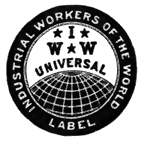Follow-up on Green Revolution
Since I wrote the original Green Revolution post, I found Dave Pollard's link to this excellent article: "The Seven Deadly Myths of Industrial Agriculture." My favorites:
Myth One - Industrial Agriculture Will Feed the World
World hunger is not created by lack of food but by poverty and landlessness, which deny people access to food. Industrial agriculture actually increases hunger by raising the cost of farming, by forcing tens of millions of farmers off the land, and by growing primarily high-profit export and luxury crops....
...Industrial agriculture proponents spend millions on advertising campaigns each year claiming that people are starving because there is not enough food to feed the current population, much less a continually growing one. "Guess Who's Coming to Dinner? 10 billion by 2030" proclaimed an old headline on Monsanto's Web page. The company warns of the "growing pressures on the Earth's natural resources to feed more people" and claims that low-technology agriculture "will not produce sufficient crop yield increases to feed the world's burgeoning population." Their answer is pesticide- and technology-intensive agriculture that will produce the maximum output from the land in the shortest amount of time. Global food corporations, they say, will have to serve as "saviors" of the world's hungry....
A deeper look at the root causes of hunger will reveal that any claim that world hunger is caused by a lack of food is simply a self-serving agribusiness myth. In reality, food production has kept pace with population growth. Studies conducted by the U.N. Food and Agriculture Organization (FAO) clearly indicate that it is abundance, not scarcity, that best describes the world's food supply. Every year, enough wheat, rice, and other grains are produced to provide every human with 3,500 daily calories. In fact, enough food is grown worldwide to provide 4.3 pounds of food per person per day, which would include two and a half pounds of grain, beans, and nuts, a pound of fruits and vegetables, and nearly another pound of meat, milk, and eggs....
If we have plenty of food to feed today's population and to support population growth for the foreseeable future, why do 800 million people still go hungry every day? One basic cause is food dependence. The industrial system has, over centuries and in virtually every area of the globe, "enclosed" farmland, forcing subsistence peasants off the land, so that it can be used for growing high-priced export crops rather than diverse crops for local populations. The result of enclosure was, and continues to be, that untold millions of peasants lose their land, community, traditions, and most directly their ability to grow their own food-their food independence. Removed from their land and means of survival, the new "landless" then flock to the newly industrialized cities where they quickly become a class of urban poor competing for low-paying jobs and doomed to long-term hunger or starvation. The victims of enclosure are becoming ever more numerous. Just 50 years ago, only 18 percent of the population of developing countries resided in cities; by the year 2000 the figure jumped to 40 percent. Unless current policies change, by 2030 it is estimated that 56 percent of the developing world will be urban dwellers. A United Nations report has found that close to 50 percent of this urban population growth is due to migration, much of it forced, from rural to urban communities.
...Increasing agricultural output has little effect on the hungry because it fails to address the key issues of access to land and purchasing power that are at the root of hunger....
Yet another way that industrial agriculture increases hunger is by what it grows. The problem is that corporate-driven agriculture, after it "encloses" land and evicts the farm communities from these lands, does not grow staple foods for the hungry. Global corporations favor luxury high-profit items like flowers, sugarcane, beef, shrimp, cotton, coffee, and soybeans for export to wealthy countries. Local people are often left with nothing.
Myth Four - Industrial Agriculture is Efficient
Small farms produce more agricultural output per unit area than large farms. Moreover, larger, less diverse farms require far more mechanical and chemical inputs. These ever increasing inputs are devastating to the environment and make these farms far less efficient than smaller, more sustainable farms....
According to a 1992 U.S. Agricultural Census report, relatively smaller farm sizes are 2 to 10 times more productive per unit acre than larger ones. The smallest farms surveyed in the study, those of 27 acres or less, are more than ten times as productive (in dollar output per acre) than large farms (6,000 acres or more), and extremely small farms (4 acres or less) can be over a hundred times as productive.
In a last-gasp effort to save their efficiency myth, agribusinesses will claim that at least larger farms are able to make more efficient use of farm labor and modern technology than are smaller farms. Even this claim cannot be maintained. There is virtual consensus that larger farms do not make as good use of even these production factors because of management and labor problems inherent in large operations. Mid-sized and many smaller farms come far closer to peak efficiency when these factors are calculated. ...
...It is time to reembrace the virtues of small farming, with its intimate knowledge of how to breed for local soils and climates; its use of generations of knowledge and techniques like intercropping, cover cropping, and seasonal rotations; its saving of seeds to preserve genetic diversity; and its better integration of farms with forest, woody shrubs, and wild plant and animal species. In other words, it's time to get efficient.









8 Comments:
Food security, as has been said by other anti-capitalists of note, is the quintessential and most forceful moral issue which condemns capitalism. these arguments against corporate agri-business and the appalling continued existence of starvation need to be presented over and over and over.
The Stalinist "experiment" in collectivized agriculture was based on the idea that Big Is Best and the USSR's agricultural productivity plummeted. As much food was grown on the tiny personal plots still allowed (less than 5% of total acreage)than on the huge collective farms. This lesson was not picked up by the apologists for corporate agriculture, but what can you expect from the "state socialism of the rich" types, anyway.
Larry, I think Leninism/Stalinism was considered "an experiment" by the western Elite. They covertly supported it because they wanted to see how far you could go.
So the elite certainly got the lesson, though I agree that their apologists may not have.
One thing Marx warned against many times was "reactionary socialism". I think Engels however might have been corrupted by it, the worm in the apple so to speak.
I like the first myth a lot - it reminds me of another myth, Overpopulation, which goes hand in hand with the "Green Revolution". Overpopulation is a code word for "we're stealing too much from people at the low margin, and we're going to have to get rid of them or find a way to keep them barely alive".
Kevin-
Your post inspired an effusive if wandering reflection which I posted to my salon here: http://groups.yahoo.com/group/Salon_Liberty/message/1058.
blessed be,
Lady Aster
San Francisco
)(*)(
Thanks, Lady Aster. Yahoo groups won't let me in to see it, unfortunately.
~sigh~. Meae apologiae, this is why I'm getting my own blog soon.
I don't want to post something this long to clutter up your blog, so I'll email it to you.
Blessed be.
I thought I should post a collection of observations here, about this and the previous related thread.
In certain respects size of agriculture does matter, but not the ones under consideration so far.
One is that certain techniques may be needed that don't work well on small plots, the way ox drawn ploughs worked best with long furroughs since that reduced the labour turning them round - hence the mediaeval system. Other ploughs only became practical once those soils had altered over time to have fewer obstructions like roots from former forests.
Another respect is that it can help to have a lot of area under cultivation, even if not all of it has a single cultivator. This is particularly important for things like rice or strawberries or whatever that are food for migrant birds; if there is only one small plot, it will be wiped out.
This may make it seem as though only large enterprises can ever get started, even if small ones could keep going in the presence of others. This isn't true, both because many small enterprises can star at once - co-operatively - and because things like rice don't have to start with entire paddies, and grain generally doesn't have to start on a large scale.
Rice can be grown as hill rice, and Australian cereal farmers used to work without full ploughing, working inefficiently in terms of land but efficiently in terms of capital. This is in fact the "right" way to use slash and burn agriculture - temporarily, to get you through the time needed to get things going right: getting that first crop in.
With agriculture you can compare low/high capital growing with low/high capital results. Potatoes are a low capital crop with low capital requirements, grain generally the reverse, and rice generally needs little capital but is itself a good store of capital. There are exceptions according to adopting non-standard techniques temporarily, e.g. during introduction.
Certain traditional methods never applied in some areas. For instance, there never was Chinese style rice growing in Madagascar, even though they use rice paddies. While today there are migrant harvesters, these aren't the descendants of dispossessed formerly independent peasants but of freed slaves - agriculture used to be slave driven before colonialism.
Genetic engineering isn't simply man doing what evolution has always done, because the changes occur at a far faster rate than natural mutation. With evolution, natural selection mops up harmful developments independently since they do not occur together, but the man made version allows harmful feedbacks to develop in ecologies.
Eviction after enclosure isn't the only process involved. Water rights also come up these days. The mechanism is much the same, but the particular subject matter isn't the same. People who focus on land may miss other areas where analogues of enclosure happen - and may miss the degradation of customary methods that used to hold off Tragedy of the Commons stuff that goes wrong without ownership.
The Coasian approach only looks at aggregate benefits, so it's no criticism of that as such that it doesn't look at justice issues. In particular, a truly knowledgeable Coasian would counter that by saying that equity should be met in one of two ways: separately, through social security (not functioning when appropriation occurs); and through proper buyouts at the time (that also don't occur in these developing countries). But the Coasian argument is not at fault, merely misapplied.
What the Coasian argument does often leave out, though, is the cost of policing the new property rights - a new externality, and not one to handle through customary means but which requires a state context and legal framework (a non-problem to people who don't have a problem with the growth of the state).
There is more I could write on the subject but it really goes better with the materials I'm preparing for KC. He keeps posting faster than I can catch up with responses, so I keep falling behind on that.
Thanks for the info, PML. I agree that (relatively) larger size may be more efficient in some cases. And you're right--it can be achieved by a cooperative pooling of resources by small farmers.
I, too, am leery of arguments that treat genetic engineering as only a slightly stepped-up version of selective breeding. Selective breeding takes characteristics that were already there, that had arisen and shown their viability in a local ecosystem through the process of natural selection.
There's quite a bit on state diversion of irrigation resources to the big boys in Lappe, and on the abuse of political clout to monopolize access to supposedly communal water sources.
I also agree that Coase himself wasn't guilty in "Social Cost" of the same kind of vulgar Coasianism I hear from many "libertarians." Your observation on the costs of enforcing the new property rights is a good one. But Coase, I believed, was pretty open to the idea of government expenditure to reduce transaction costs.
Post a Comment
<< Home